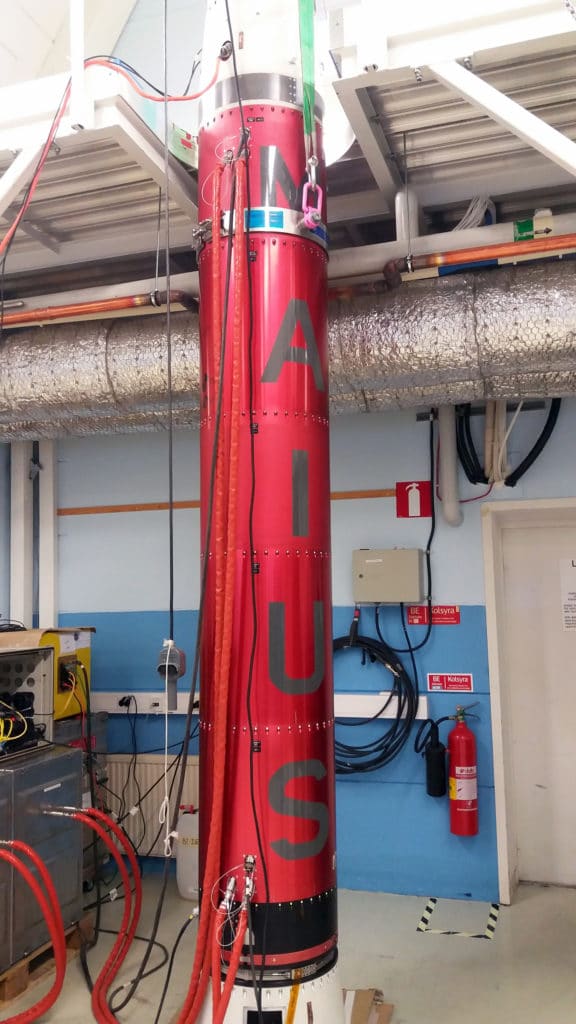
Atom interferometry is the technique that underlies most of our precision measurements using atom interferometers. Using this technique, it is possible to measure the gravitational field of the Earth or detect gravitational waves.
For the first time, scientists from Germany managed to successfully perform atom interferometry in space- onboard a sounding rocket. They have established the technological basis for atom interferometry onboard a sounding rocket and demonstrated that such experiments are possible on Earth and in space.
In 2017, scientists from various universities and research centers led by Leibniz University Hannover launched the MAIUS-1 mission, the first rocket mission on which a Bose-Einstein condensate has been generated in space.
Bose-Einstein condensates (BECs) in free fall constitute a promising source for space-borne interferometry.
Professor Patrick Windpassinger of the Institute of Physics at Johannes Gutenberg University Mainz (JGU) said, “For us, this ultracold ensemble represented a perfect starting point for atom interferometry. Temperature is one of the determining factors because measurements can be carried out more accurately and for longer periods at lower temperatures.”
Atom interferometry: Generating atomic interference by spatial separation and subsequent superposition of atoms

For these experiments, scientists separated the gas of rubidium atoms using laser light irradiation. Tey ten subsequently superpositioned tose atoms. Based on the forces acting on the atoms on their different paths, several interference patterns can be produced; hence, they can measure the forces that are influencing them, such as gravity.
At first, the study demonstrated that the coherence, or interference capability, of the Bose-Einstein condensate as a fundamentally required property of the atomic ensemble. Until now, atoms in the interferometer were only partially superimposed due to variations in light sequence- which, in the case of coherence, led to the generation of spatial intensity modulation.
Scientists demonstrated the viability of the concept, which may lead to further experiments targeting the Earth’s gravitational field, the detection of gravitational waves, and a test of Einstein’s equivalence principle.
In the future, scientists are planning to investigate the feasibility of high-precision atom interferometry to test Einstein’s equivalence principle. By comparing the free-fall acceleration of the two types of atoms, a test of the equivalence principle with previously unattainable precision can be facilitated.
Dr. André Wenzlawski, a member of Windpassinger’s research group at JGU, who is directly involved in the launch missions, said, “Undertaking this kind of experiment would be a future objective on satellites or the International Space Station ISS, possibly within BECCAL, the Bose-Einstein Condensate and Cold Atom Laboratory, which is currently in the planning phase. In this case, the achievable accuracy would not be constrained by the limited free-fall time aboard a rocket.”
Journal Reference:
- Maike D. Lachmann et al., Ultracold atom interferometry in space, Nature Communications (2021). DOI: 10.1038/s41467-021-21628-z
Continue reading Scientists demonstrated atom interferometry in space for the first time on Tech Explorist.
0 comments:
Post a Comment